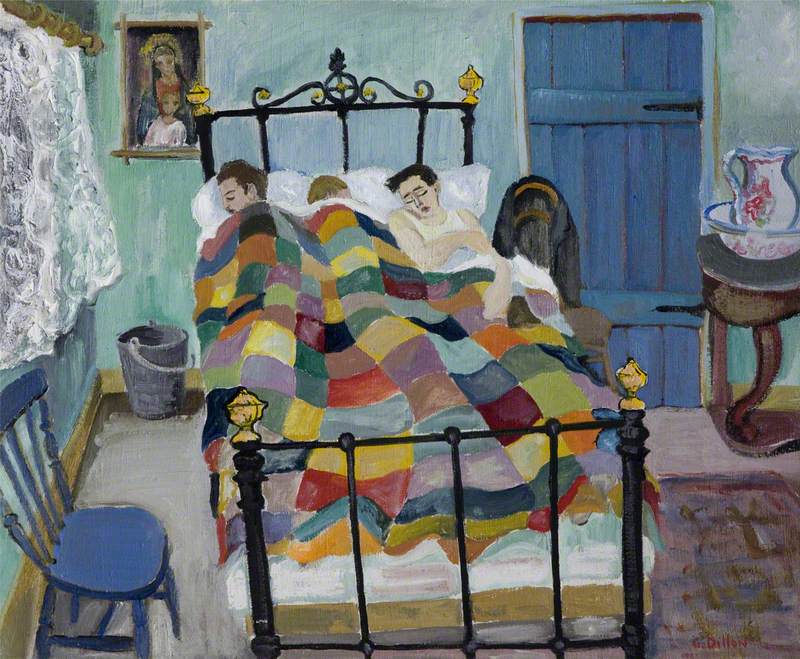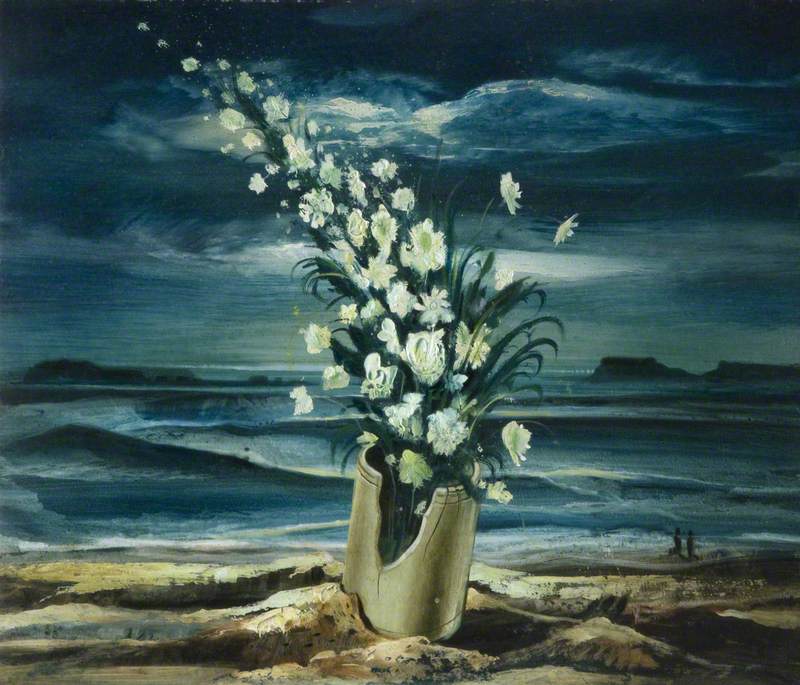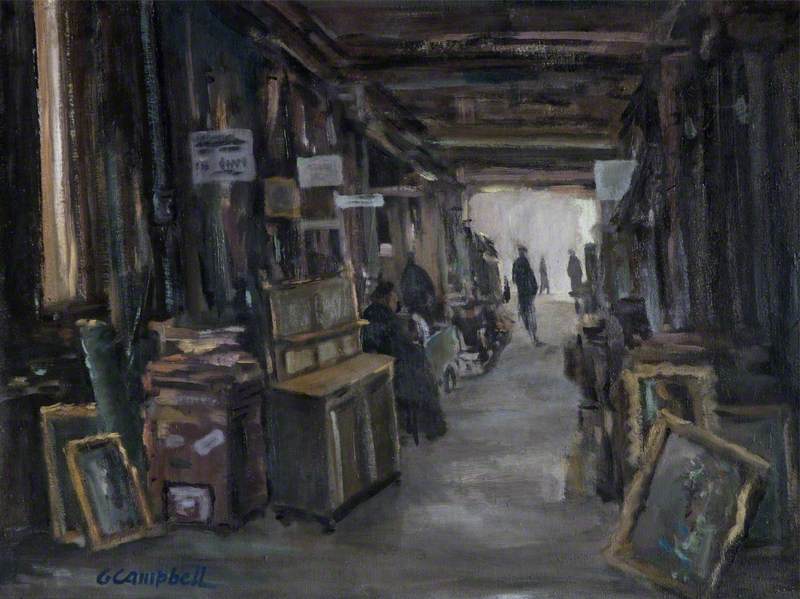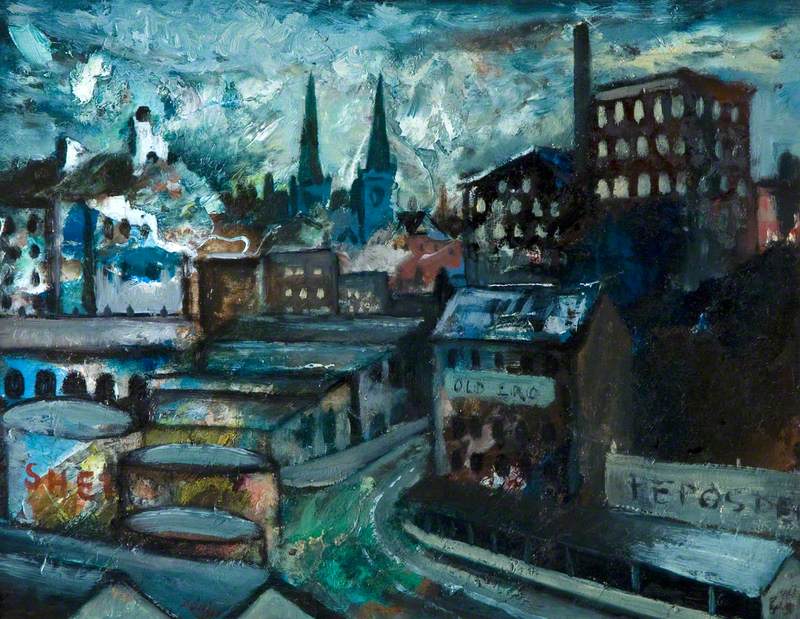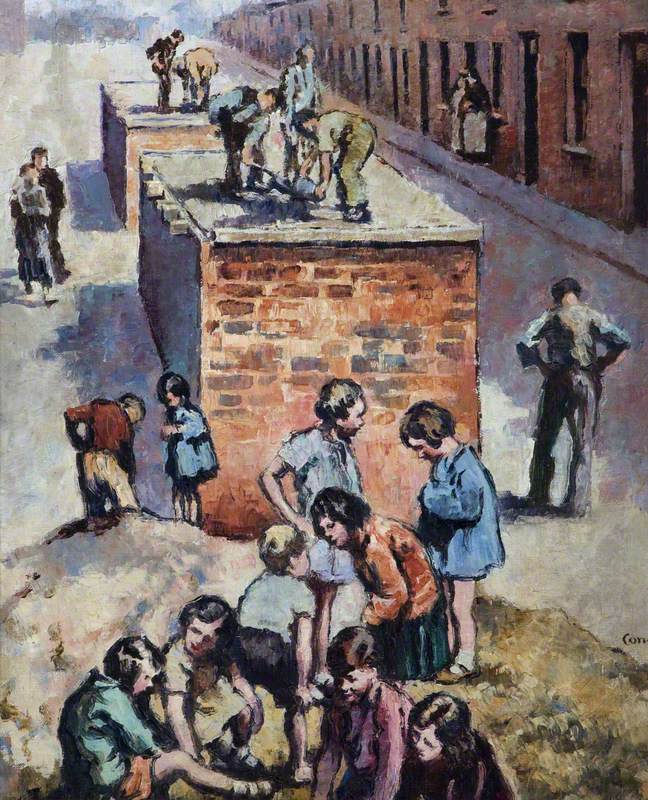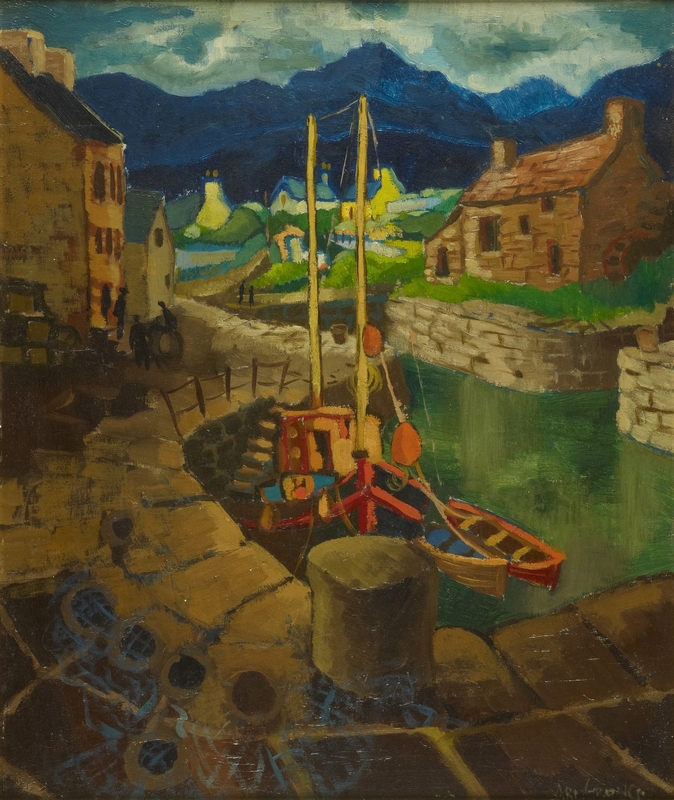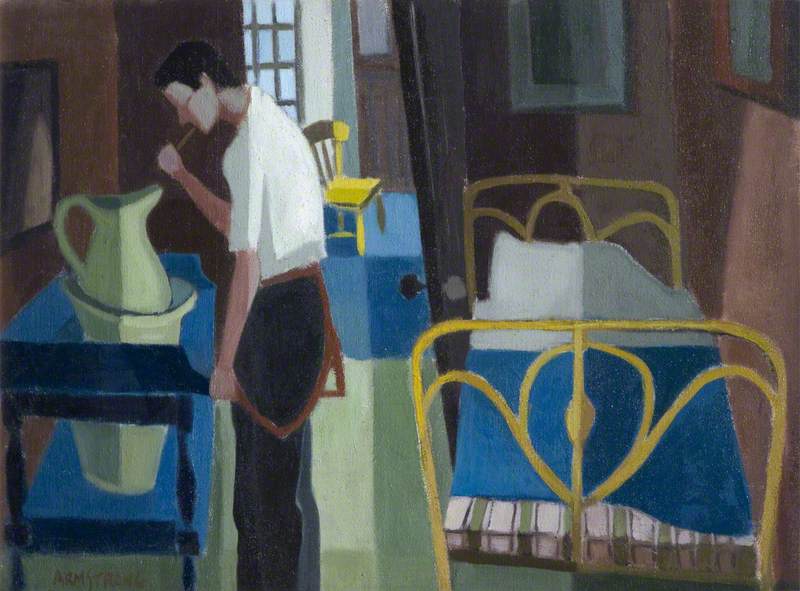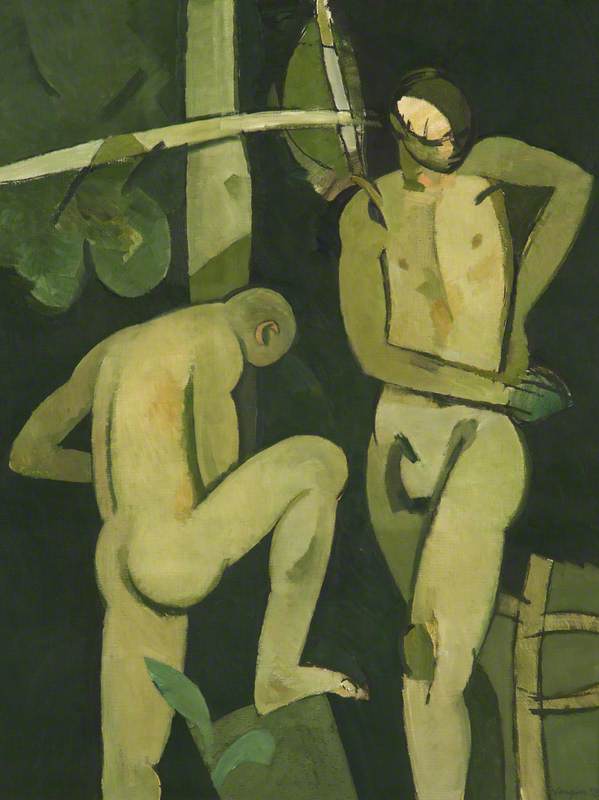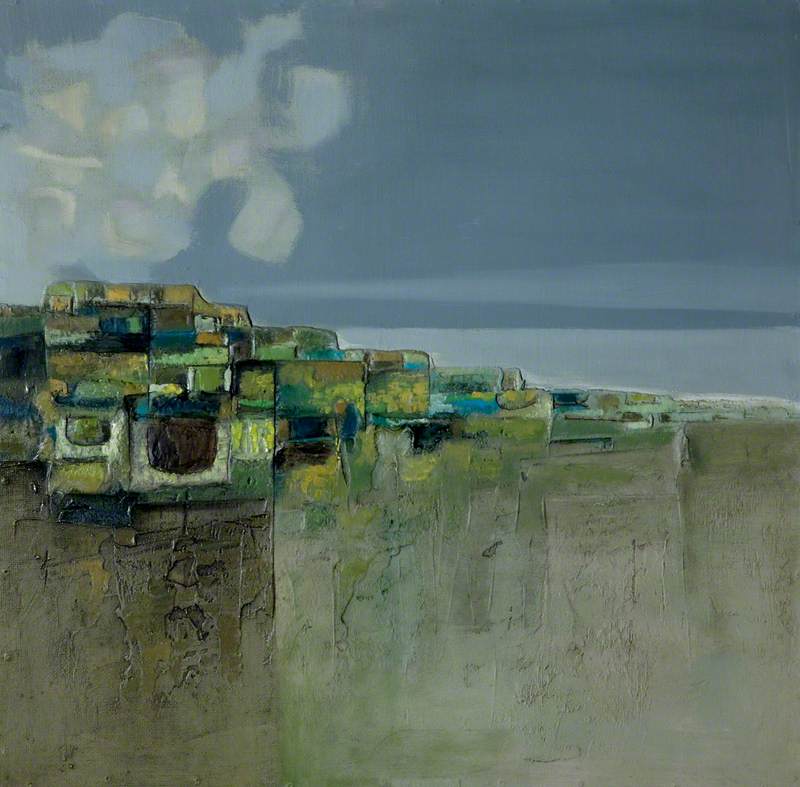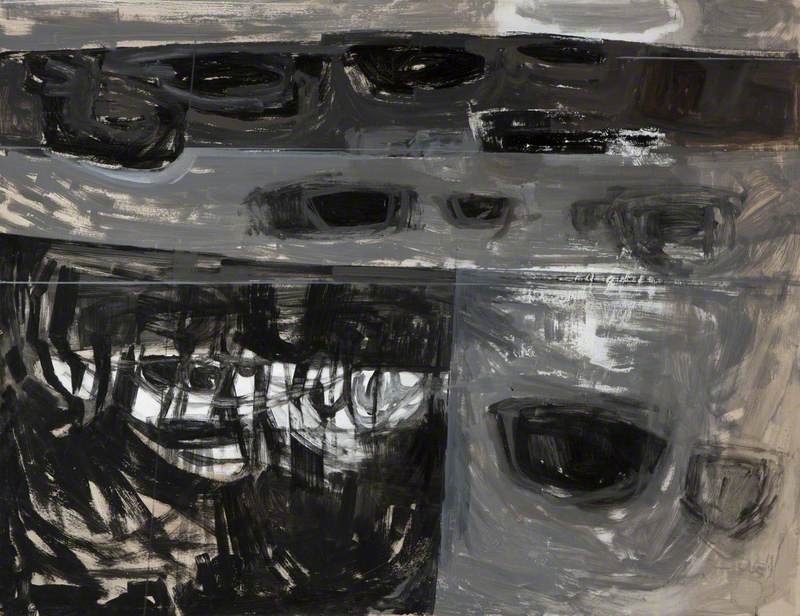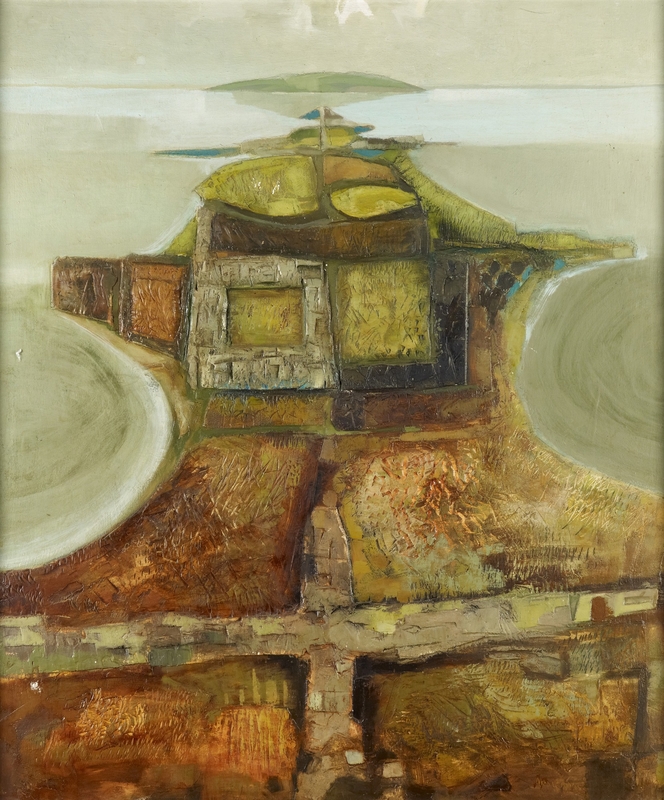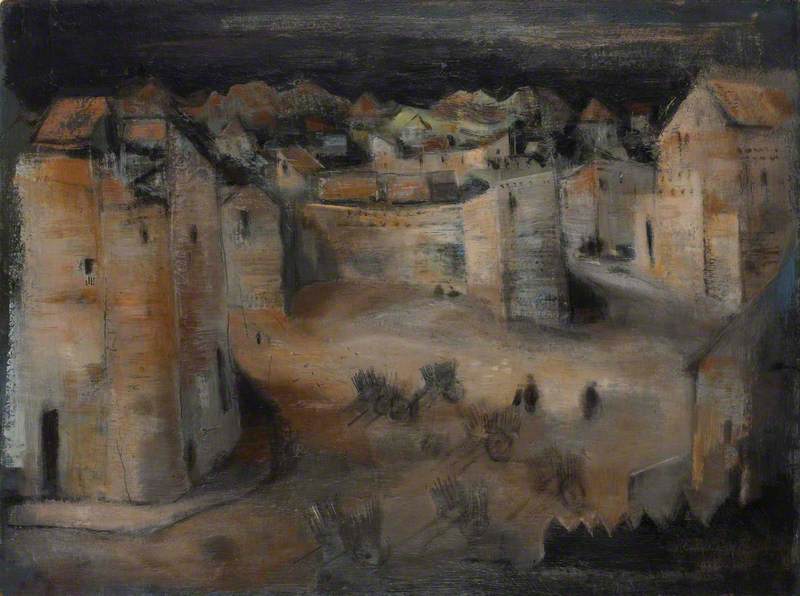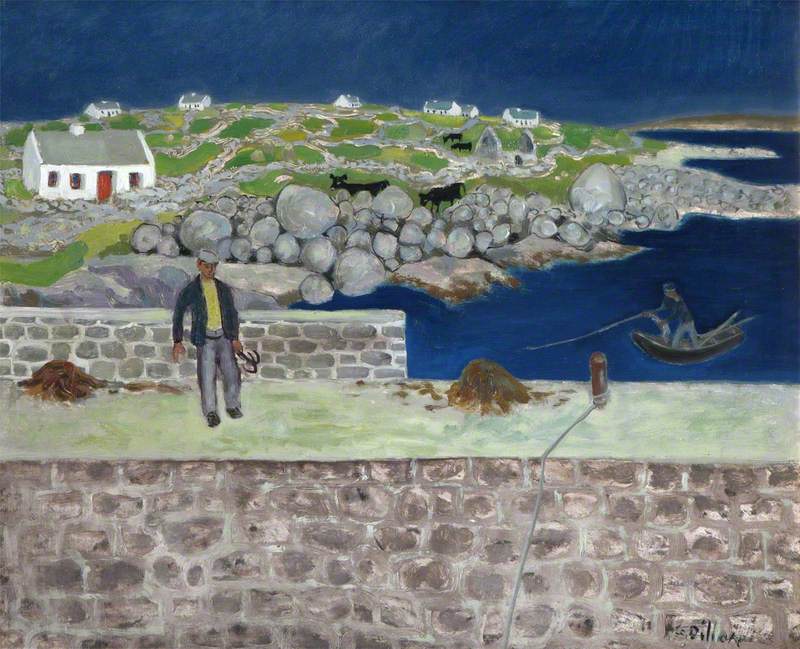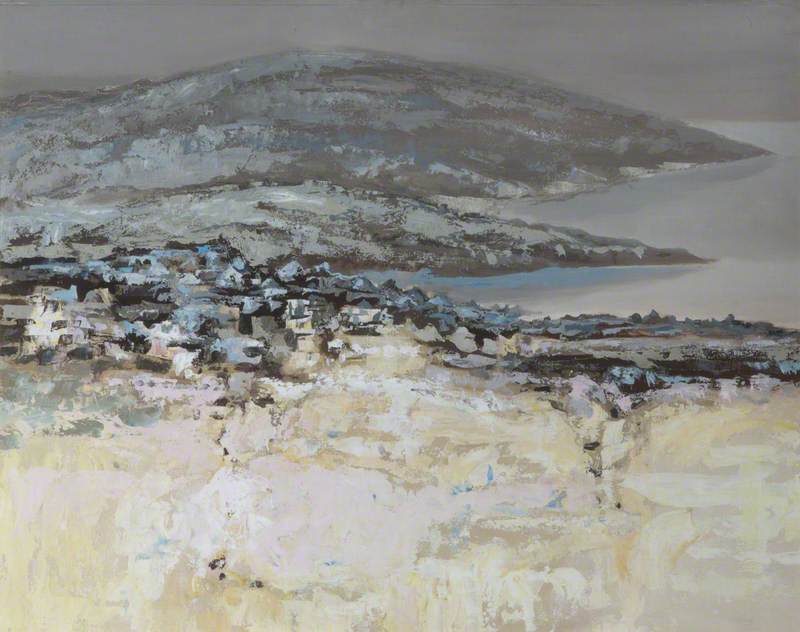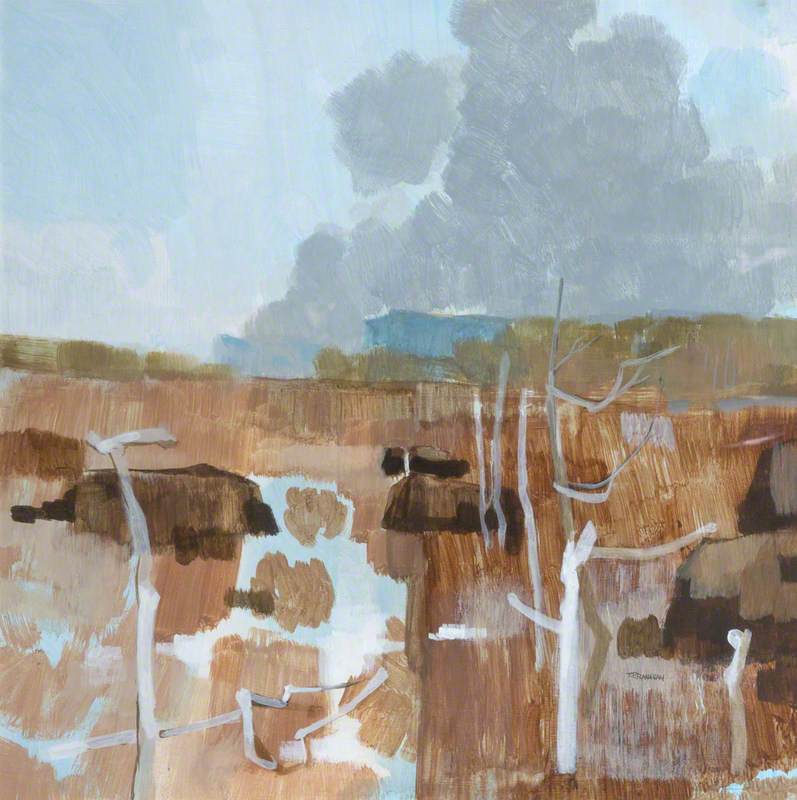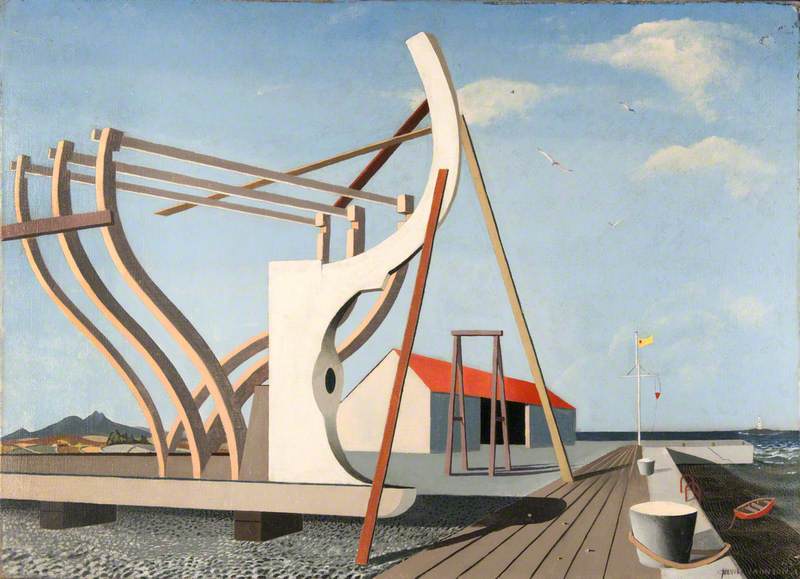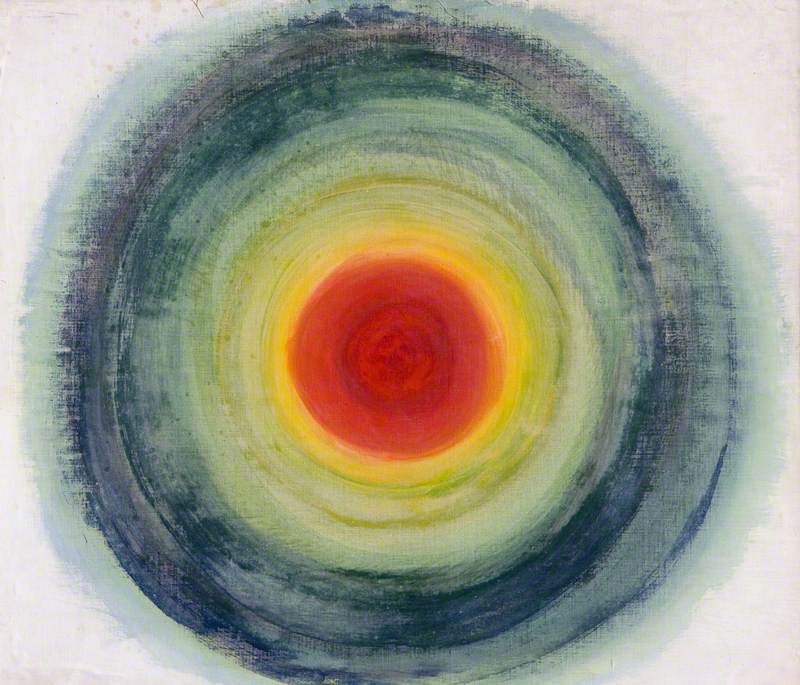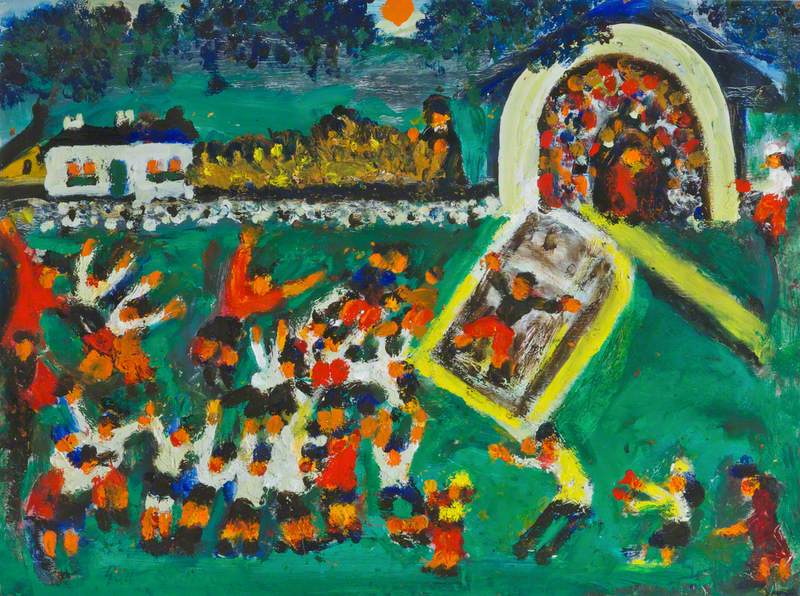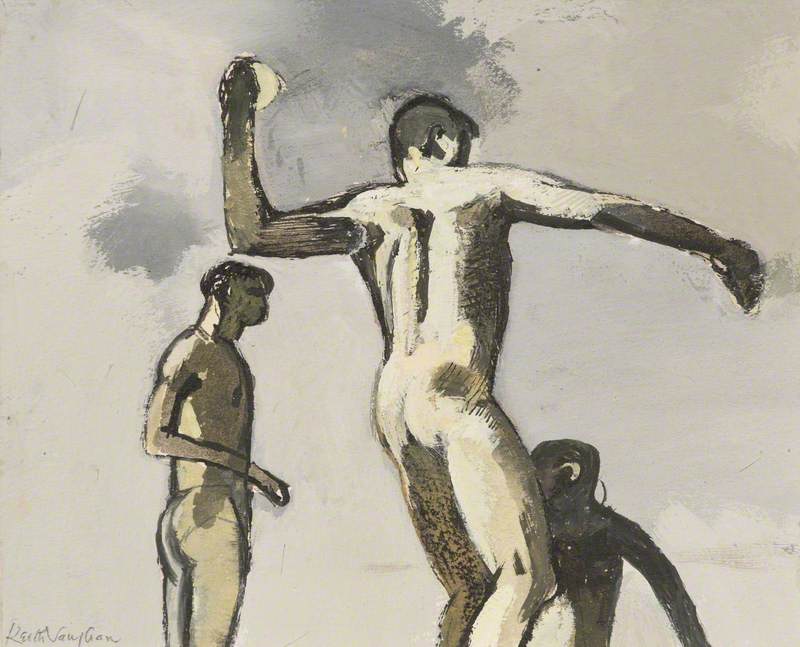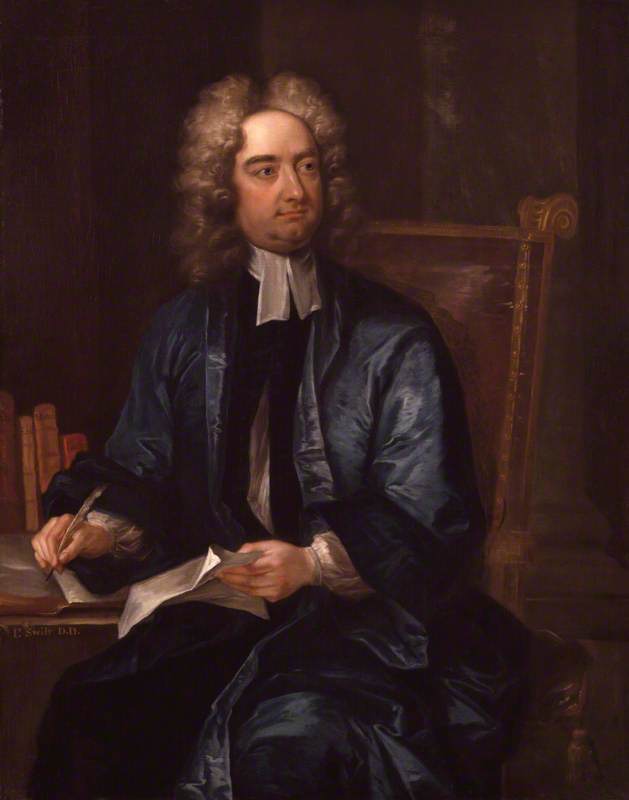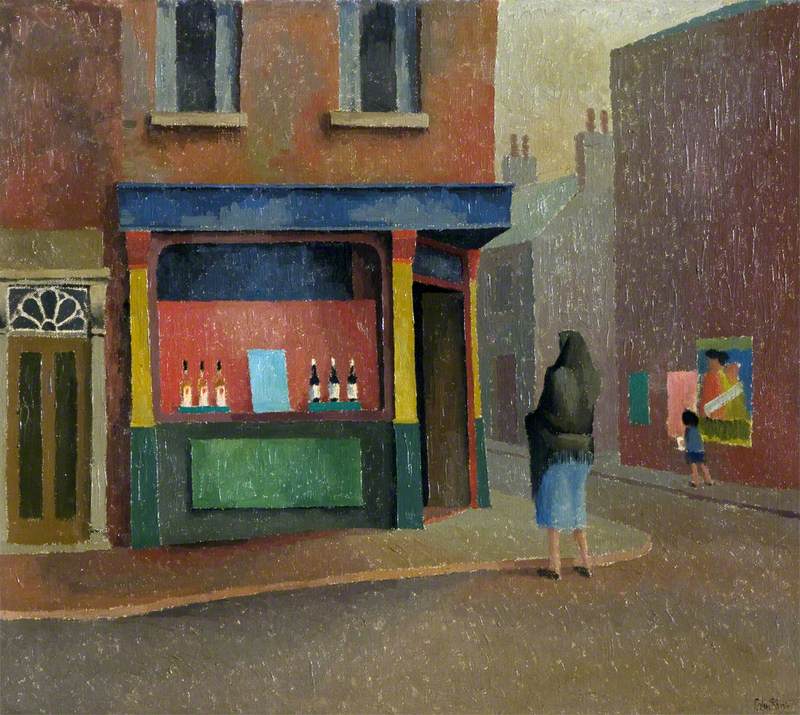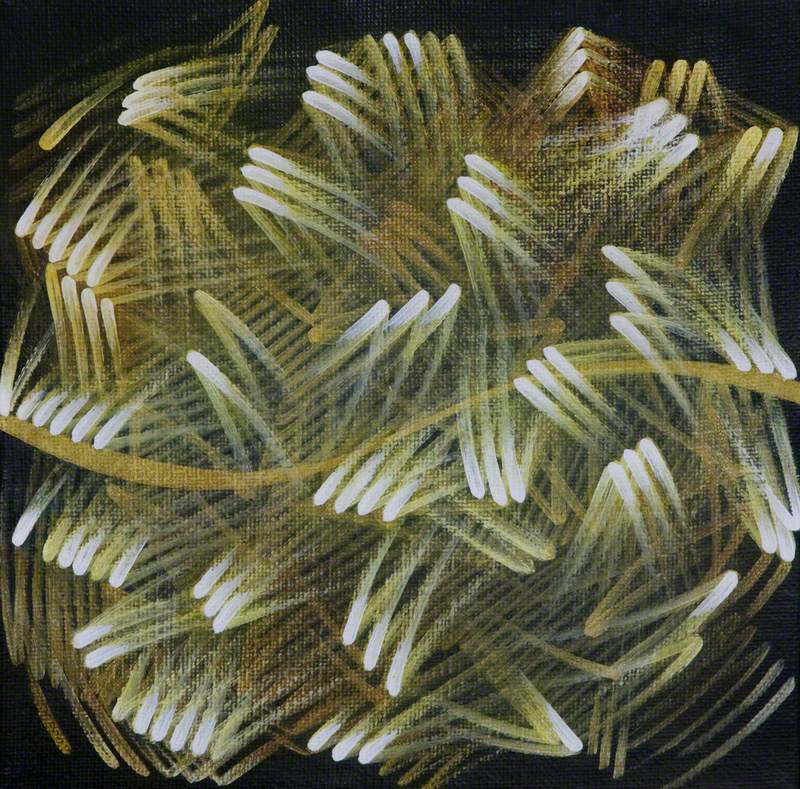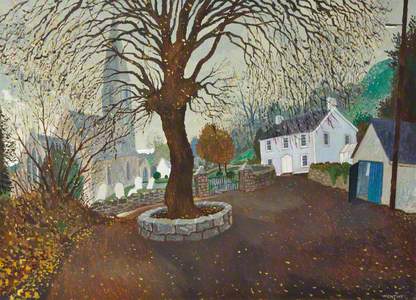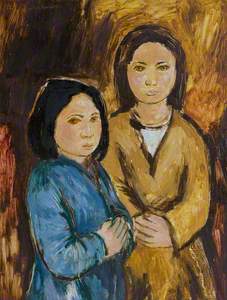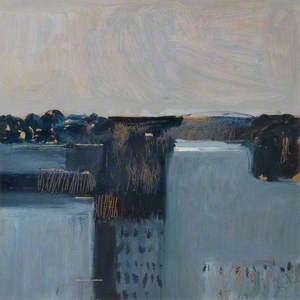One hundred years after his birth, in Carrickfergus in 1924, Arthur Armstrong remains a somewhat elusive figure within twentieth-century Irish art. By the 1950s he was acknowledged as a significant artist, yet he has often been overshadowed by some of the painters with whom he was close, and alongside whom he exhibited, most notably Gerard Dillon and George Campbell. With an exhibition to mark his centenary opening later this year, it seems an appropriate moment to assess Armstrong's place within the canon of modern Irish art.
Armstrong claimed he had begun painting at the age of four, but he initially studied political science and then architecture at Queen's University, Belfast, before changing direction to take evening and weekend classes at Belfast College of Art around 1942–1943. It appears to have been here that he met Dillon, still in his mid-20s, who had already held a one-person exhibition in Dublin. This was opened by the abstract Cubist painter Mainie Jellett, who was also an enthusiastic supporter of young artists.
The group of painters with whom Armstrong is usually most associated belonged to a slightly older generation of largely self-taught, Belfast-based artists, who had begun to exhibit around the city during the war before being taken on by the Victor Waddington Gallery in Dublin, and subsequently coming to be seen as representing a new direction for Irish art in the post-war period. Gerard Dillon, George Campbell and Daniel O'Neill were all friends, and Waddington added Colin Middleton and Nevill Johnson to the group.
Armstrong was initially absorbed into a group of slightly younger, struggling and again largely self-taught painters, with whom he began to exhibit in various informal locations around Belfast. These included James MacIntyre, Thomas MacCreanor and Leslie Zukor, as well as George Campbell and his brother Arthur. He also worked in a studio at MacIntyre's parents' house in 1946, when he decided to abandon his job at the Belfast Gas Office to paint full-time, without telling his widowed mother; Armstrong struggled to survive on the sale of his work for a year, before taking another job.
He was included in some group exhibitions in Belfast in the mid-1940s, with much of the work reflecting the post-war world, the damage Belfast sustained from the Blitz, and the social problems and deprivation that were also a feature of some areas of Belfast. William Conor, a more established painter who had been an official War Artist, also made several works at this time that reflected wartime life in Belfast.
The 1950s was a time of greater recognition for Armstrong, with his first solo exhibition in Dublin, which demonstrated a more stylised and Cubist-influenced manner of painting, as in Annalong Harbour, as well as a move away from urban subject matter. There was a notable one-person exhibition in 1956 at the Belfast gallery of the Council for the Encouragement of Music and the Arts, which was well-received by a number of critics and established Armstrong as one of the leading young representational painters in Ireland.
The highly formalised style of works such as Bedroom at Ballylough demonstrates Armstrong's interest in Georges Braque, whose work he had seen in Paris the previous year. There are also interesting resonances closer to home, with comparisons that can be made to highly stylised post-war paintings of figures in interiors by artists such as William Scott, Louis le Brocquy and Keith Vaughan. John Hewitt, writing as Macart in his review of the exhibition, noted that ‘Armstrong's translation into a personal idiom of tables, chairs, pots, vases, jugs and basins, has a compelling authority'.
Around this time Victor Waddington moved his gallery to London and broke his ties with most of the Irish artists he had exhibited, and it remained as difficult for an artist to survive on sales of his work in Northern Ireland as it had in the previous decade.
In 1957 Armstrong travelled to Spain for the first time, staying there with George and Madge Campbell, and igniting a love of the country and its culture that was often reflected in his work. After living in London for several years, surrounded by a lively group of painters and writers he knew from Northern Ireland, Armstrong returned to Dublin in 1962. Although he remained close to Dillon and Campbell, Armstrong's painting had become dominated by the Irish landscape, particularly the rugged coast of the West. His subject matter and, to some degree, the manner in which he worked began to align him more closely with other Northern Irish painters, such as Colin Middleton and T. P. Flanagan, who were also part of the group of artists who exhibited with the Hendriks Gallery in Dublin.
Crevinishaughey, Grey Morning, Co. Archdale
Colin Middleton (1910–1983) 
In 1966, writing in the Irish Times, Brian Fallon placed Armstrong within a ‘group of romantic landscapists almost all northern-born – Colin Middleton, Campbell himself, Daniel O'Neill, Armstrong, T.P. Flanagan', whom he described as ‘the nearest thing to a native school we have produced…and at its best its achievements are admirable'. Middleton and Flanagan sought to convey the physical nature of the landscape, as well as its history and myth, in its pictorial depiction. When figures appeared in Armstrong's landscapes, they often seemed to belong to a memory or a myth more than the ordinary world. Armstrong's use of a post-Cubist compositional structure to establish a series of receding planes created a highly abstracted sense of the landscape while maintaining the suggestion of vast space. In addition, he emphasised its substance and texture by building up paintings with plaster to create a sense of monumentality.
Armstrong continued to travel with George and Madge Campbell to Spain, with Spanish subjects increasingly dominating Campbell's work, and to the west of Ireland. They were often accompanied by Dillon, who had shared a house in Ranelagh, Dublin, with Armstrong since 1968, but in 1971 he died, aged only 55. This loss seems to have affected Armstrong artistically as well as leaving a deep and enduring personal mark. Daniel O'Neill's death in 1974 and that of George Campbell, with whom he had remained close, in 1979 left Armstrong increasingly isolated by the end of the decade.
In the 1970s Armstrong left the Hendriks Gallery, and while he continued to exhibit regularly across Ireland, the loss of the highly regarded Hendriks as a supporter and advocate might have affected Armstrong's reputation and visibility in the Dublin art world. He continued to be successful, however, with at least one sell-out exhibition at The Kenny Gallery. The influence of Cubism was still evident in the abstracted forms and slightly flattened planes in his landscapes, although physical texture became less of a feature in his works.
His stature was confirmed by his membership of Aosdána and of the Royal Hibernian Academy, and a major retrospective exhibition held by the Arts Council of Northern Ireland in 1981 included 68 works painted between 1950 and 1980. In the catalogue introduction, he was described as ‘one of the most original and accomplished of Irish painters'.
Arthur Armstrong died in 1996. Despite being so closely associated with other artists, and with his reputation still arguably overshadowed by Dillon and Campbell in particular, Armstrong's work remained individual and independent. There is a particular rigour in his Cubist-influenced analysis of pictorial form and compositional arrangement; he described himself as an abstract painter and many of his concerns seem to relate to materials and style rather than content.
Arthur Armstrong is arguably one of the most significant and innovative Northern Irish painters of the mid-twentieth century, and one of the artists who most defined the Irish landscape in this period. Ultimately, his work became rooted in the west of Ireland, and he imagined and created a monumental and mythical image of the landscape and coastline, conveying its physical substance to remarkable effect.
Dickon Hall, art historian and Art UK Commissioning Editor (Northern Ireland)

